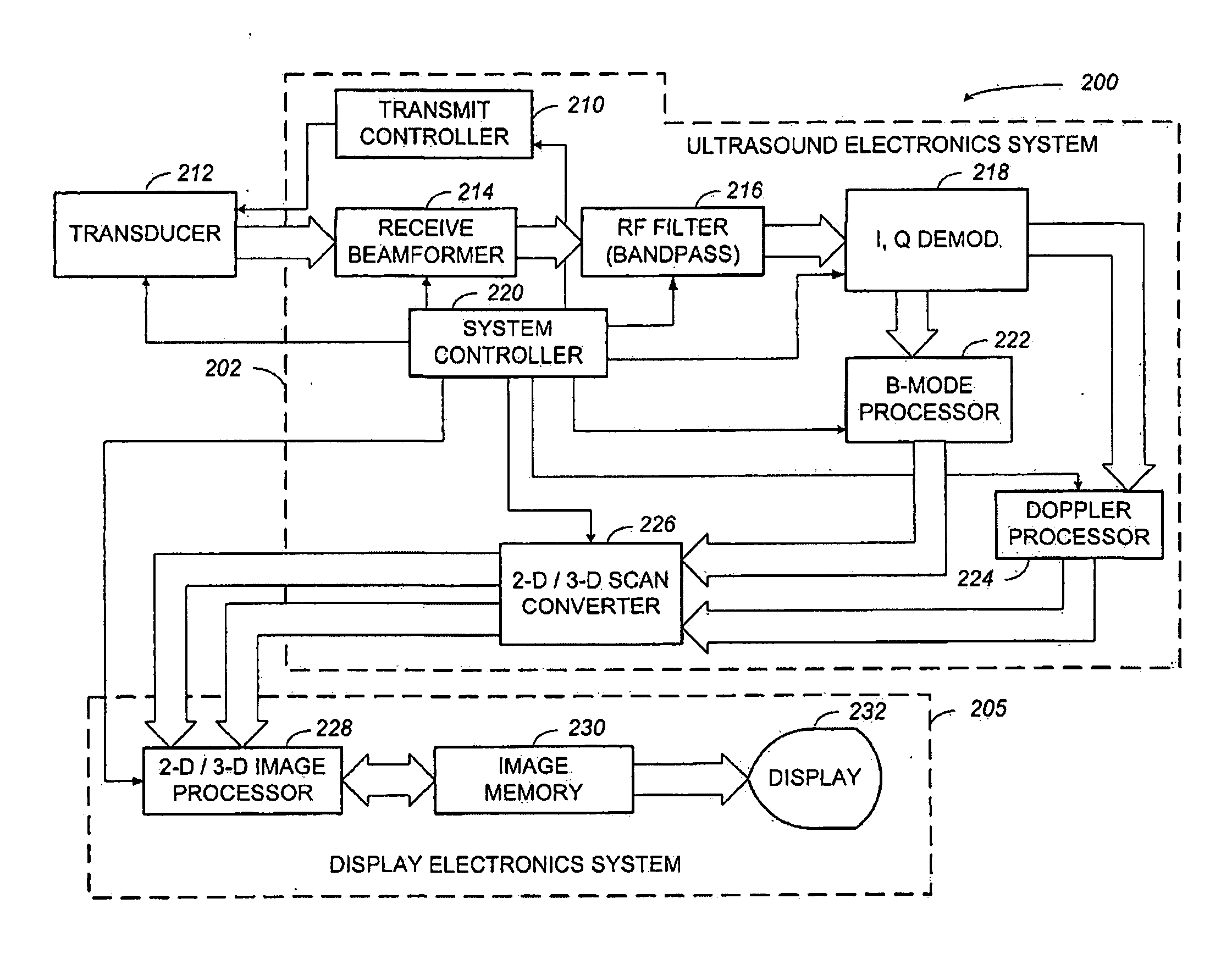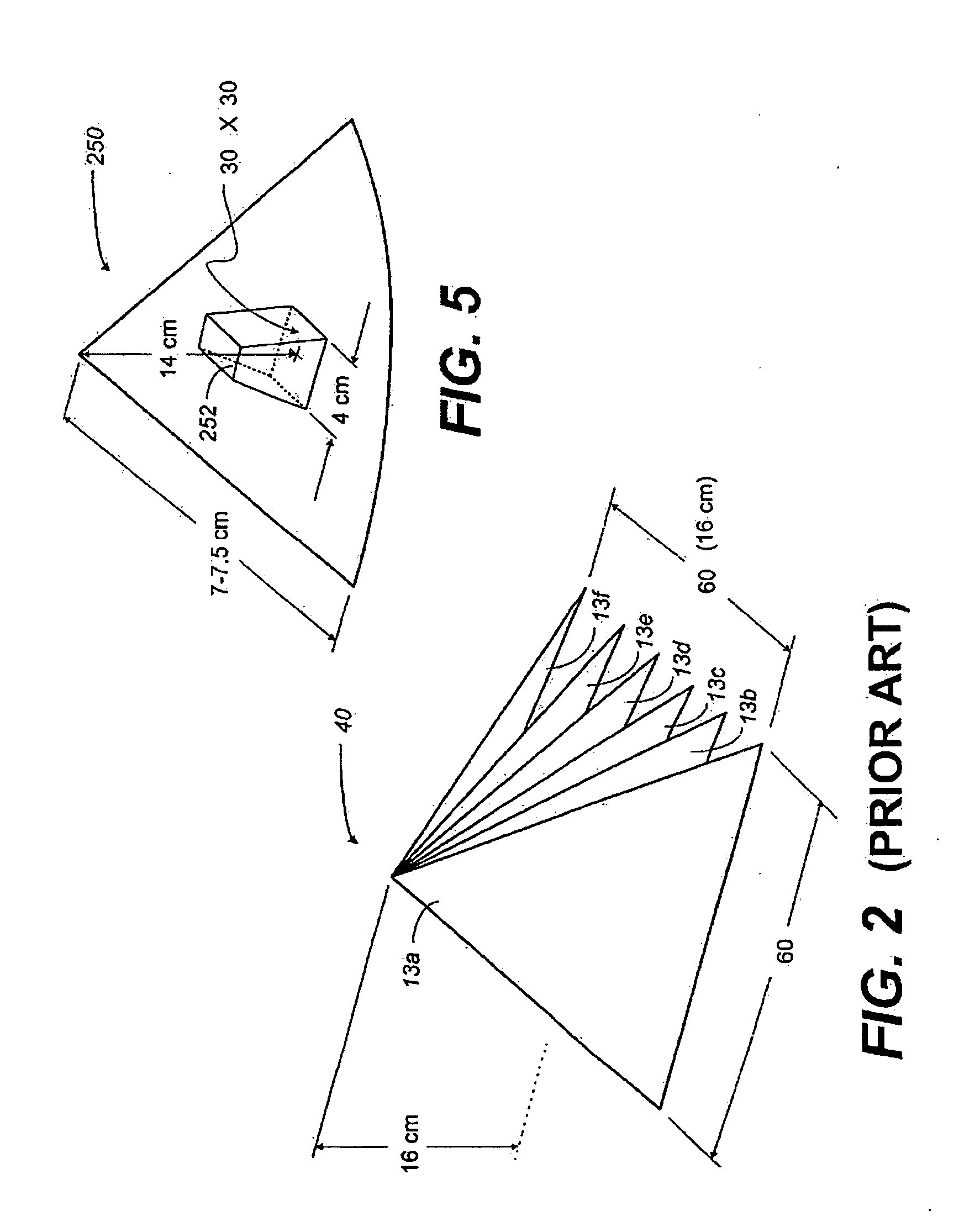Ultrasound-imaging systems and methods for a user-guided three-dimensional volume-scan sequence
a three-dimensional ultrasound and ultrasound imaging technology, applied in tomography, applications, instruments, etc., can solve the problems of affecting the frame rate of real-time imaging systems, unable to provide provisions to permit the technician to reduce the size of volumes, and a large amount of time to acquire large volumes, so as to influence the rate of target-volume acquisition and optimize frame rates
- Summary
- Abstract
- Description
- Claims
- Application Information
AI Technical Summary
Benefits of technology
Problems solved by technology
Method used
Image
Examples
Embodiment Construction
[0037]The three-dimensional ultrasound-imaging system and method of the present invention will now be specifically described in detail in the context of an ultrasound-imaging system that creates and displays brightness-mode (B-Mode) images, or gray-scale images, as well as, color-flow or Doppler-mode images which are well known. However, it should be noted that the teachings consistent with the improved three-dimensional ultrasound-imaging system and method of the present invention may be practiced using other ultrasound-imaging systems that are suited for the method, as will be apparent to those skilled in the art.
System Architecture and Operation
[0038]An exemplar architecture of an embodiment of an ultrasound-imaging system capable of implementing the method of the present invention is illustrated by way of a functional block diagram in FIG. 4 and is generally denoted by reference numeral 200. Note that many of the functional blocks illustrated in FIG. 4 define a logical function ...
PUM
 Login to View More
Login to View More Abstract
Description
Claims
Application Information
 Login to View More
Login to View More - R&D
- Intellectual Property
- Life Sciences
- Materials
- Tech Scout
- Unparalleled Data Quality
- Higher Quality Content
- 60% Fewer Hallucinations
Browse by: Latest US Patents, China's latest patents, Technical Efficacy Thesaurus, Application Domain, Technology Topic, Popular Technical Reports.
© 2025 PatSnap. All rights reserved.Legal|Privacy policy|Modern Slavery Act Transparency Statement|Sitemap|About US| Contact US: help@patsnap.com



